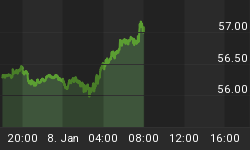It's different this time, right? Despite the fact that just about every measure shows that U.S. households spending more and saving less than ever before, there are some Pollyannas who can find a naïve reporter to write a story asking you to suspend disbelief. We saw it at the time of the stock market bubble of the late 1990s. And now, in an article entitled "A Look Behind the U.S. Saving Rate," in the December 6 edition of The Wall Street Journal, we see it at the time of the housing bubble. The "official" NIPA household saving rate is the difference between personal disposable (after-tax) income and the sum of consumer expenditures (including expenditures on durables other than houses) and nonmortgage interest payments. So, the increase in the equity in our houses is not counted toward household saving. But neither is the increase in mortgage borrowing subtracted from after-tax income. When mortgage borrowing is taken into consideration, the rosy picture of household finances attempted to have been painted by The Journal article starts to wilt.
Saving is a flow concept. So, let's start by looking at the flow concept of residential investment - the value added with regard to residential structures - and the flow of mortgage borrowing. This is shown in Chart 1. Notice that in 2003, household mortgage borrowing was 154% of residential investment - a post-war record high. What this implies is that households were actually withdrawing equity from their houses in 2003 by a record amount. They were reducing the size of their retirement nest egg.
Chart 1
Now let's look at some stock concepts, as opposed to flows. Chart 2 shows the amount of outstanding mortgage debt relative to the market value of residential real estate at yearends. Yet another post-war record was set in 2003. Household mortgage debt was almost 45% of the market value of residential real estate. So, U.S. houses were more highly leveraged at the end of 2003 than at any other post-war year-end.
Chart 2
As I explained in my weekly commentary, "Wealth Illusion," of October 22, 2004, capital gains can be ephemeral. Too bad debt is not as ephemeral. Take a look at Chart 3, which shows the debt-to-asset ratio for households (a stock concept) and total credit market borrowing by households (a flow concept). During the second half of the 1990s, the debtto- asset ratio was declining for households. Was this because the rate at which they piling up debt was declining? Nope. It was because the market value of their assets - corporate equities at the time - was skyrocketing. But look what happened to household debt ratios after the stock market bubble burst in 2000. Debt ratios skyrocketed. The capital gains evaporated, but the value of the debt did not.
Chart 3
What caused the stock market bubble to burst? Fed interest rate increases - only 175 basis points of such between the end of June 1999 and the middle of May 2000. What is the Fed doing now? Raising interest rates. What are interest rates likely to do the rate of increase in residential real estate prices? Slow down the rate of increase at best; have them decline at worst. Unless some other household asset skyrockets in price as house prices cool off - households do not own much gold - household net worth will rise more slowly, or even fall. To paraphrase a comment by Fed Governor Ferguson in The Journal article, smaller capital gains, or even capital losses, on equity holdings and residential real estate could sharply lower the net worth of many households, leaving them ill-positioned to meet goals for precautionary or retirement savings as they have saved less from current income.
















